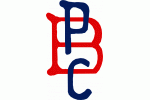
Voting They Can Believe In
Research suggests that we vote not for an explicit effect on an election (most data suggests that larger-scale elections are minimally affected by an individual vote) but rather for an intrinsic reason (duty, a sense of having a “voice”, etc.). Even in the wake of the last presidential election, where youth turnout was cited as one of the major reasons Barack Obama was elected, turnout amongst 18-to-24-year-olds didn’t exceed 18%, truly abysmal numbers.
Apparently, the U.S. isn’t alone. The Czech Republic seems to have a challenge with getting young people to vote (not true for the overall population, which is competitive with the U.S. in voter turnout in their last presidential election, hovering around 65%). Like their youthful counterparts in the U.S., young Czechs feel that the process isn’t worth their time. So, how to get the youth of the Czech Republic?
In a WSJ Article today, The Stanislav Bernard brewer (its owner is a former candidate) is offering free beer to young people who vote in the country’s upcoming election. Citing the “near-steady stream of domestic political infighting, corruption scandals and mudslinging” as reasons why the country’s youth don’t regularly vote, Mr. Bernard believes that their participation is critical to democracy. So, his offer is simple: classes at college preparatories that get at least 85% of students to sign a declaration to vote win a free keg, and the first 1,000 students to sign the declaration win a free case of beer.
A former (and potentially future) candidate hit for the cycle with this stunt — he’s getting massive world-wide publicity for his beer, he’s supporting a noble cause and he’s raising his profile amongst a potential future voting bloc. In a country that consumes a massive amount of beer (about 320 pints annually), this seems to be a surefire way to sell beer AND democracy. Who can’t drink to that?



